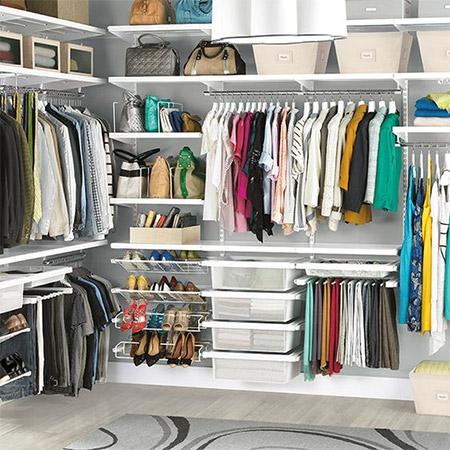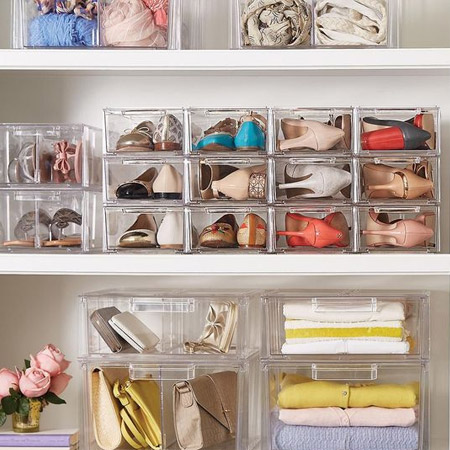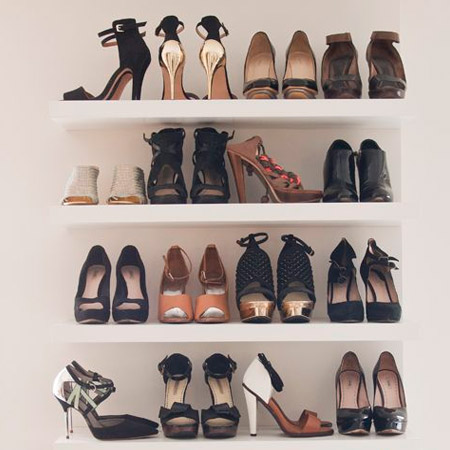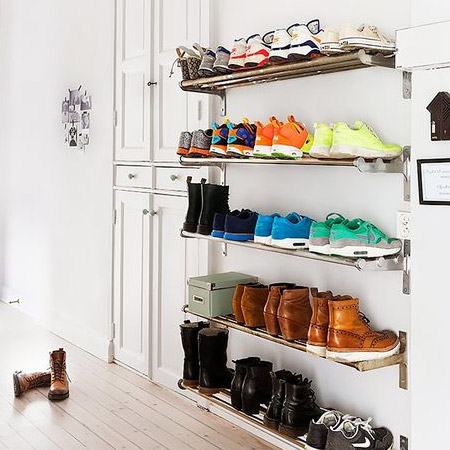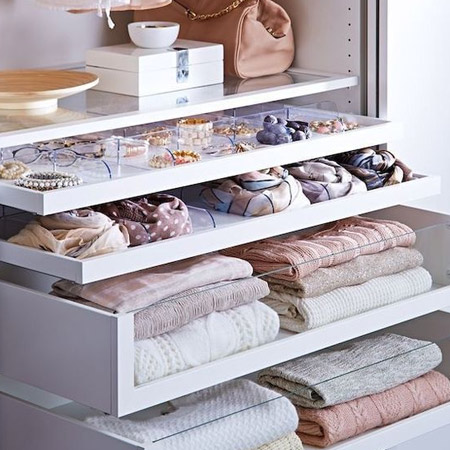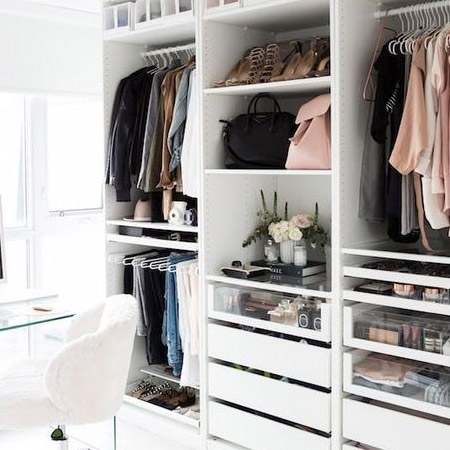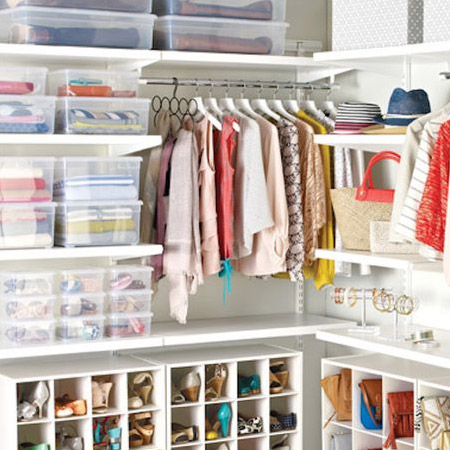Is an Organised Closet even possible?
I've watched plenty of TV shows about organisation, read tons of articles and done more than my fair share of research, but is an organised built-in closet really possible?
pinterest.com/pin/637470522226041540/
I have managed to stay organised for no longer than two weeks, and then things start to get back to normal; t-shirts unfolded, clothes falling off the hangers, shoes tossed into the bottom of the cupboard - I give up!
Closets are designed to provide extra storage space, but while closet designers do their utmost to try and accommodate all storage needs into a mass-produced closet design, the truth is that any built-in closet needs at least a few customizations to fulfill your complete storage needs.
Shelves are too deep and you end up digging around trying to find what you want and messing up the entire contents in the process. Only one level of hanging space is provided, and that gets crammed to the max. You literally have to have skinny hands to be able to retrieve anything out of the crush. While they might give you a top shelf, if you're a shorty like me the only thing that shelf is useful for is items I never want to see again - ever.
I have two closets in a small (very small) walk-through area. On one side is hanging and shelves, and on the other side is shelves and a small vanity. Personally, there are too many deep shelves and nowhere near enough hanging space.
"Have you ever noticed how advertisements for organised closets never seem to feature women's clothes - only a couple of dresses. Where do the rest of the clothes go? Get real! We women have tons of stuff, and no matter how hard we try, it's not easy to clean out. "
This article isn't about clutter control - it's about built in cupboards and how we can make the most of the available space. This is MY design plan for ways to maximise on the available storage in a built in closet, so that I can renovate a BIC and show you step-by-step how to add or remove components in your own closet.
pinterest.com/pin/132222939043129609/
I like the idea of clear-view shoe containers, especially for seasonal footwear. Now that top shelf can be a bit more useful and be a place to store more stuff that I don't use everyday.
pinterest.com/pin/100557004160802877/
However, I think a shoe rack that can be hung on the inside of the door is a neat way to store shoes that you wear regularly. It doesn't take up any additional space and allows easy and convenient access to your shoes.
pinterest.com/pin/255438610093538872/
if you’re one of those people whose shoes always end up in a pile at the bottom of the closet, pull-out drawers are another option to consider. Fitted at the bottom of the closet they contain shoes neatly, don't take up too much space, and keep the closet uncluttered.
Not only could you use pull-out drawers for shoes, but shirts and T-shirts as well. This would allow you to easily store right at the back of the drawer and not have to dig through everything at the front to find what you need! And pull-out drawers are perfect for underwear as well.
pinterest.com/pin/580471839445473368/
pinterest.com/pin/343540277811731570/
If your closet has a single, high hanging rail, the lower section of the closet can easily be converted to provide for additional storage.
Plastic, airtight bins that are semi-transparent allow you to see what's inside and not have to delve through layers of clothing to find what you are looking for. Plus, if you have an older home it's a great way to protect clothes from fish moths.
pinterest.com/pin/265290234275773232/
The ideal closet - so far - appears to have a selection of built in and added elements that feature all of the above: upper and lower hanging rails, a shoe rack that is easy to access, and pull out storage. With all these in mind it's time to design and plan my new BIC and share my success (or failure!).

